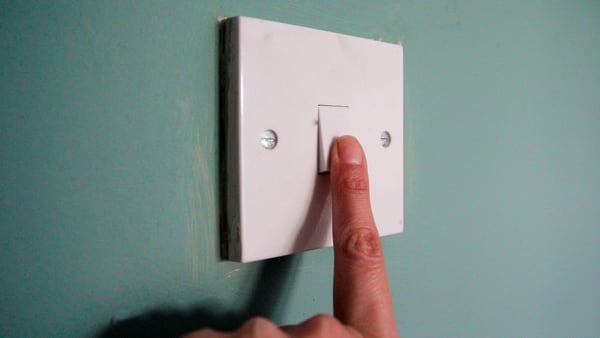Opinion: while achieving net zero is crucial to mitigate climate change, it's an expensive, complex and dynamic process
We hear a lot about achieving net zero in buildings and all major economic sectors. The term refers to striking a balance between the amount of greenhouse gas emitted by the combustion of fossil fuels or agricultural production and the amount removed from the atmosphere by forests, lands, and technologies during a project’s life cycle. It's a term which is also applied to energy in buildings to account for a building’s net energy consumption from non-renewable energy resources.
Achieving net zero in buildings and all major economic sectors is crucial because it can help mitigate climate change, reduce environmental impact, and build a sustainable future for the planet. The Irish Climate Action Plan aims to achieve net zero no later than 2050 and puts climate solutions at the centre of Ireland's social and economic development. The building sector is one of the vital high-impact sectors of this plan with goals such as improving the energy efficiency of existing buildings, zero-emission new builds and retrofitting programmes.
We need your consent to load this rte-player contentWe use rte-player to manage extra content that can set cookies on your device and collect data about your activity. Please review their details and accept them to load the content.Manage Preferences
From RTÉ Radio 1's Countrywide, wealthy nations need to achieve Net Zero by 2040, but what would this look like on an Irish farm?
It doesn't cost a cent to envision a magical realm where buildings dance harmoniously with the environment, leaving no trace of carbon behind, summoning the sun’s rays, and taming the wind’s gusts to power our structures with untamed sustainability. Net-zero is the quest of building structures in which human comfort and environmental responsibility are weaved together.
But achieving this net zero state is an expensive, complex and dynamic process. Net-zero emissions, net-zero energy buildings or nearly zero energy buildings are all open-ended terms, allowing the wordplay and opportunity for lack of transparency, long timelines and weak goals. All of these point to 'greenwashing’, the misleading practice of presenting a product, service, or organisation as more environmentally friendly than it is.
Greenwashing becomes easier when there is an apparent lack of standardisation in defining net-zero targets and the absence of common assessment indicators on a regional or global level. Despite all fancy net-zero claims, standardisation is yet to be done . In 2020, the UK's Competition and Markets Authority discovered that 40% of green claims made online by companies could be misleading, particularly in the construction sector, where it has been seen to make questionable net zero carbon claims in the last few years.
We need your consent to load this rte-player contentWe use rte-player to manage extra content that can set cookies on your device and collect data about your activity. Please review their details and accept them to load the content.Manage Preferences
From RTÉ Radio 1's Today With Claire Byrne, retrofitting advice from Cheap Irish Homes co-presenter, engineer and house builder Kieran McCarthy
The construction sector in particular is prone to greenwashing due to the project's longer life cycle and multiple stages. Even if any individual stages meet or comes close to meeting a stakeholder’s self-defined net-zero targets, the entire building can still be falsely labelled as net zero for its entire operational time.
The relationship between embodied carbon and net-zero claims is also crucial. Embodied carbon refers to the emissions associated with a project or building's life cycle, while net zero claims aim to offset or eliminate operational emissions. Neglecting embodied carbon can lead to misleading net zero claims. Renewable energy technologies, such as solar panel production, wind turbine construction and retrofitting efforts, may be beneficial for reducing operational emissions, but can still result in net emissions due to the embodied carbon associated with their manufacturing and construction processes.
The net zero mirage is like a shimmering oasis in the desert of sustainability, promising a refreshing solution to our environmental woes. Efforts to build net zero involve minimising the use of carbon and maximising energy efficiency through sustainable design, construction, and operation practices. Net-zero buildings strive to minimise environmental impact, conserve resources, and contribute to global climate action efforts.
We need your consent to load this rte-player contentWe use rte-player to manage extra content that can set cookies on your device and collect data about your activity. Please review their details and accept them to load the content.Manage Preferences
From RTÉ Radio 1's Morning Ireland in April 2021, Minister for the Environment, Climate, Communications and Transport Eamon Ryan on the Government's Climate Bill which aims for net-zero emissions within 30 years
But closer inspection reveals this to be a mirage, a deceptive illusion that masks the cement-based jungle of true challenges and complexities of achieving genuine net-zero emissions. These buzzwords seduce us with visions of carbon neutrality and green credentials, but there are hidden trade-offs, questionable practices, and potential greenwashing beneath the surface. The net zero mirage is a cautionary tale, reminding us to approach the net-zero concept with critical eyes and to carefully examine the offsets and claims.
One of the dangers associated with net-zero claims is relying solely on offset technologies, forests and oceans to address the changing climate by 2050. Climate change is a multifaceted problem. Our only planet is at stake, and we can’t be gambling on it. The offset technologies we rely on as part of the net-zero plan are not yet fully mature. The existing forests and oceans that are crucial in sequestrating most of the emissions are already vulnerable. Meanwhile, establishing new forests to compensate for their decline will require considerable time, a luxury we cannot afford in the face of the urgent climate crisis.
One of the dangers associated with net-zero claims is relying solely on offset technologies, forests and oceans to address the changing climate
Acknowledging the distinction between taking action now versus waiting until the eleventh hour to address the climate crisis is crucial. While both scenarios may achieve net-zero emissions in 2050, the crucial difference lies in the accumulation of emissions throughout the years leading up to that point. Delays, unclarity, unaccountability and weak goals shall leave us with a severely warmed globe that will be incredibly challenging to mitigate, remove, or adapt to.
Emphasising transparency, accountability, and independent certifications are the ways out of the greenwashing maze. These shall help validate and verify sustainability claims, ensuring genuine progress towards environmental goals.
The views expressed here are those of the author and do not represent or reflect the views of RTÉ






